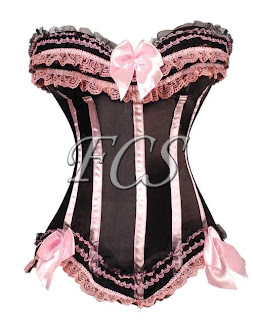>I have been having fantasies about this soup since I saw the blog post last night, as if someone slow-cooked my fantasy man for six hours and served him in a bowl. Chicken noodle soup is my go to feel good meal in the winter and I usually eat Healthy Choice because it’s less salty than Campbell’s. You see the theme in my life? Cans. So the prospect of forcing someone in my household to make this soup has me counting couch change for bribery and extortion. Enjoy.
This recipe comes from http://mellyskitchen.blogspot.com
Soups are my favorite part about cool weather. Every week, I make at least one pot of soup or two, depending on my mood. Chicken noodle is one of my favorites, but unfortunately, can also be the most time consuming, if you really want to do it right. Because of that, this recipe will also be long. My apologies, but I promise you, it’s worth it.
You can open up a can of chicken broth, throw in some chicken meat, some noodles and call it good. I emphasize you can. I can’t. That’s not my style.
For this particular recipe, I use a whole chicken, fresh vegetables and (usually) I make the noodles myself. This time I used Reames Frozen egg noodles, which, for the sake of simplicity, is what I’ll include in this recipe.
1 whole chicken, rinsed with “parts” removed (liver, kidney, giblets, etc.)
1 8oz jar Chicken “Better than Bouillion” (I got mine at Target)
1 lb full sized carrots, peeled
6 stalks of celery, washed with leaves still on
1 large onion, chopped
3 qt water
2 tsp salt
1 tsp black pepper
1 tsp garlic powder
1 tsp ground sage
½ tsp ground thyme
½ tsp poultry seasoning
¼ tsp ground marjoram
3 bay leaves
1 24oz pkg Reames frozen egg noodles
The first thing you have to make is a solid chicken stock. This cannot be rushed. It cannot be improvised. It’s going to take a good six hours to get a flavorful stock. If you don’t have time to do this, go find another recipe to make. Don’t say I didn’t told you so when the flavor isn’t what you want it to be. This recipe will make enough chicken stock for TWO pots of soup, but we’ll get to that in a minute.
STOCK:
Clean and rinse off the chicken, make sure there are no stray feathers. Also check that the organs and neck have been removed. Some people leave them in and remove them later. It’s up to you. I don’t simply because they kinda gross me out. (I’m a wuss.) Season the inside of the chicken cavity with a healthy sprinkle of salt and pepper and put it in the pot. (Make sure you’re using a large pot so the broth and vegetables have room to move around while it cooks.)
Take the rinseed celery stalks and cut off the leafy tops, including about an inch or so of regular stalk. This is the part that is going in the stock. Save the bottom half of the celery stalks for later. You should have 6-8 full sized carrots in a pound. Peel them all, but set aside half of them for later. For the stock, I don’t bother chopping the vegetables very delicately. They’re going to fall apart over that six hour time frame anyway, so I don’t worry about it. In fact, when I put the veggies in the pot after I’ve cleaned them, I break them into chunks instead of chopping them.
Over the top of the chicken, celery, onion and carrots, I add the 3qts of water, then the spices and the entire jar of Better than Bouillion. This isn’t my usual broth enhancer when I need a touch of chicken flavor, but I’ve found it has the best flavor of anything else on the shelf and is PERFECT in the soup. It’s also not as salty as other bouillion or soup bases on the market.
Put the pot on the stove and bring it to a boil over high heat. Once it comes to a boil, turn the heat down to where bubbles are just coming to the surface around the edge and in the center of the pot (around the chicken). Anything hotter and you’re losing a lot of flavor to steam. Anything lower and you’re not hot enough to get the flavor out (Thank you Alton Brown for that cooking tip). Simmer for 5-6 hours, stirring occasionally.
While the chicken is cooking, I chop up the remaining carrots and celery into coin-sized pieces and put aside for later.
Once the stock has finished simmering and everything has cooked down to limp little carcasses of their former selves, caaaaaarefully remove the chicken from the broth. I use large tongs, but you can use a slotted spoon, as well. Chances are, the chicken will fall apart, but if you’re careful, you should be able to get the biggest part of it out without too much trouble. I usually set the chicken inside a colander, then the colander inside a bowl so any broth that drains out can be put back into the pot later. Scoop any remaining chicken out of the pot and add it to this colander. Let the chicken cool a bit.
In the meantime, carefully scoop all the rest of the vegetables (and any fallen chicken parts) out of the broth so nothing is left but the plain stock. (I usually strain it into another pan to make it easier.) Throw away what you scoop out. It’s done its job. Let it rest in peace. 🙂 ***
Now, is where I become a chicken snob. I don’t like dark meat. It’s got a different texture and flavor than white meat and, to me, it doesn’t work well in soups and other recipes that require continued cooking. So I remove the chicken breast meat from the carcass and shred it into bite sized pieces. (The rest of the chicken carcass gets put in my pressure cooker with 2 c of water and some salt & pepper and later becomes chicken broth to use in other recipes down the road. Holler if you want to know how to do this.)
Next, you’re going to combine the chicken meat, the broth and the vegetables you chopped up earlier and combine them together. Bring to a full boil, lower the heat and let it cook at a low rolling boil until the vegetables are tender. Once everything has cooked, I ladle out about half of the soup into a freezer-safe container. Let the soup cool on the counter, then cover it tightly and freeze it. This can be used later and combined with a pkg of egg noodles to create a healthy soup when you don’t have the time to cook. It’s also perfect just by itself when you’re feeling under the weather.
Some people cook the noodles in the broth. I prefer to do it separately in a pot of slightly salted water while the vegetables are cooking. The package directions call for a 20 minute boil. I typically do about 15 mins, then drain the noodles. By now, the vegetables should be tender. I add the noodles to the chicken stock and cook an additional 10-15 mins. Add a homemade loaf of bread or rolls and you’ve got the perfect meal for a cool night.
Again, it’s a long process and to people with tight schedules, this probably won’t work for your random Tuesday evening. But it’s great when you’ve got the time or desire to cook. A friend of mine (a baker) said “I hug people with food.” I could probably say the same thing. When you spend over six hours making a meal for someone, they know you love them. 🙂
*** At this point, if you prefer a healthier soup, you can set the broth in the freezer for a couple hours so the fat rises to the top and you can skim it off. I did this, but in the fridge overnight. I think the fat provides a fantastic flavor to the soup, but for those who are watching their weight, it’s still got great flavor without the unnecessary fat.
Read More












































